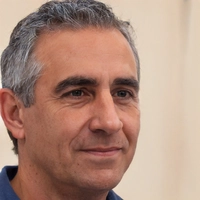
Secret Government Jobs You Might Not Know About
Secret Government Job Finder
Ever wonder what kinds of jobs exist behind the scenes of national security, where the work is classified and the payoff can be huge? Below is a no‑fluff guide to the most intriguing secret government jobs - what they involve, how to land them, and what life is like once you’re in.
- Identify the agencies that run covert careers.
- Understand the core duties and required clearances.
- See realistic salary ranges and hiring pathways.
- Spot common pitfalls and tips to boost your chances.
- Get a quick‑look comparison of the top hidden roles.
What counts as a secret government job?
In plain terms, a secret government job is any position that requires access to classified information, operates under a cover story, or supports missions that aren’t publicly disclosed. These roles exist across intelligence, defense, cyber, and even scientific research agencies.
Below we break down the most recognizable agencies and the covert career tracks they offer.
Key Agencies and Their Hidden Careers
CIA is the United States' premier foreign intelligence service. It runs covert operations, runs espionage networks, and analyzes foreign threats. Typical secret roles include Operations Officer, Technical Surveillance Specialist, and Targeting Analyst.
NSA focuses on signals intelligence and cyber‑warfare. Jobs hidden from public view include Crypto Analyst, Network Exploitation Engineer, and Quantum Computing Researcher.
MI6, officially the Secret Intelligence Service, gathers intelligence abroad for the UK. Secret positions range from Field Operative to Technical Support Officer.
GCHQ is the British equivalent of the NSA, handling communications security and cyber defence. Hidden jobs include Cryptologic Engineer, Malware Analyst, and Data‑Fusion Scientist.
DARPA develops breakthrough technologies for national security. It hires Classified Project Manager, Advanced AI Researcher, and Bio‑Security Engineer.
National Reconnaissance Office (NRO) designs and operates spy satellites. Secret roles include Satellite Systems Engineer, Imagery Analyst, and Payload Integration Specialist.
Defense Intelligence Agency (DIA) provides military intelligence to the DoD. Covert tracks include Counterintelligence Officer, Threat Assessment Analyst, and Battlefield Surveillance Technician.
Typical Requirements Across the Board
- Security clearance - Most positions need at least a Top Secret/SCI clearance, meaning a deep background check, polygraph, and sometimes a foreign influence assessment.
- Education - A bachelor’s degree is the baseline; STEM fields, international relations, and language studies are especially prized.
- Physical and mental fitness - Field‑based operatives undergo fitness tests, psychological evaluations, and sometimes pilot training.
- Discretion - You’ll sign NDAs that last a lifetime; any leak can end the career instantly.

How to Get Your Foot in the Door
- Target the agency’s official career portal - most post entry‑level analyst or technical positions.
- Build relevant experience: internships, ROTC, cybersecurity competitions, or language immersion programs.
- Network discreetly: attend defense‑industry conferences, join professional societies like the International Association for Intelligence.
- Prepare for the clearance interview - be ready to discuss finances, travel, and personal relationships in detail.
- Consider a “cover” role in a related civilian agency (e.g., Department of Energy, NASA) that can later transition into a classified position.
Salary Ranges and Benefits
Compensation varies widely by role, agency, and location, but here’s a realistic snapshot:
- Entry‑level analyst (GS‑11): $70k-$90k base, plus locality pay.
- Technical specialist (engineer, cyber‑ops): $90k-$130k.
- Field operative (mid‑career): $110k-$160k, with hazardous duty pay and overseas allowances.
- Senior program manager or senior scientist: $150k-$250k, often with performance bonuses tied to mission milestones.
All positions include robust health plans, retirement matching, and tuition assistance - plus the intangible perk of serving national security.
Quick Comparison of Top Secret Roles
| Agency | Typical Role | Clearance Level | Salary Range (USD) | Key Pathway |
|---|---|---|---|---|
| CIA | Operations Officer | TS/SCI + Polygraph | $110k-$170k | International Relations + Language fluency |
| NSA | Crypto Analyst | TS/SCI | $90k-$130k | Computer Science / Math |
| MI6 | Field Operative | TS/SCI + Spec. | $115k-$175k | Language + Cultural immersion |
| GCHQ | Malware Analyst | TS/SCI | $95k-$135k | Cybersecurity certifications |
| DARPA | AI Researcher | TS/SCI (project‑specific) | $120k-$200k | PhD + Publication record |
| NRO | Imagery Analyst | TS/SCI + Polygraph | $100k-$150k | Remote sensing / GIS background |
| DIA | Threat Assessment Analyst | TS/SCI | $95k-$140k | Military experience + intelligence studies |

Common Pitfalls and How to Avoid Them
- Leaving a digital trail - Even a personal blog can raise flags during clearance. Keep online profiles low‑key.
- Skipping the polygraph prep - Practice truth‑telling under pressure; many candidates stumble on seemingly minor details.
- Over‑promising language skills - Agencies test fluency rigorously; only claim proficiency you can prove.
- Ignoring the “cover” culture - Some secret positions start in a civilian role to build credibility before the switch.
Life Inside a Classified Role
Imagine a typical day: you wake up, check a secure portal for mission briefings, attend a classified briefing with a coffee that can’t leave the room, and spend hours analyzing satellite imagery or crafting a cyber‑attack plan. The work can be high‑stakes, but the community is tight‑knit, with clear protocols for mental health support and de‑briefing.
Because the output is secret, success is measured in prevented threats rather than public accolades. Many operatives describe a “quiet pride” that outweighs any fame.
Next Steps: Mapping Your Path
- Pick an agency that aligns with your skills (e.g., tech‑savvy? NSA or GCHQ.)
- Earn a relevant degree and supplement it with certifications (CISSP, language exams).
- Apply through the official career portal - tailor your resume to the agency’s mission keywords.
- Prepare for clearance interviews - gather financial records, travel logs, and reference contacts early.
- Consider joining a related civilian program (e.g., DOE labs, NASA) to gain a foothold before transitioning.
Remember, the journey can take years, but the payoff is a career that truly matters on a global scale.
Frequently Asked Questions
Do I need a security clearance before I apply?
No. Most agencies grant the clearance after a conditional offer. However, you must be willing to undergo the full background investigation.
Can foreign nationals work in these secret positions?
Only in very limited cases. Most TS/SCI roles require U.S. citizenship; the UK equivalents require British citizenship. Dual‑nationality is a red flag.
What’s the typical hiring timeline?
From application to clearance can take 6‑12 months, depending on the agency’s workload and your personal background complexity.
Are there remote options for secret jobs?
Some technical and analytical roles allow secure remote work, but you must use government‑approved VPNs and work in a cleared facility.
How does one maintain work‑life balance under a secret career?
Agencies provide counseling, limited leave policies, and sometimes “cover” assignments that mimic regular work hours to reduce stress.






Write a comment